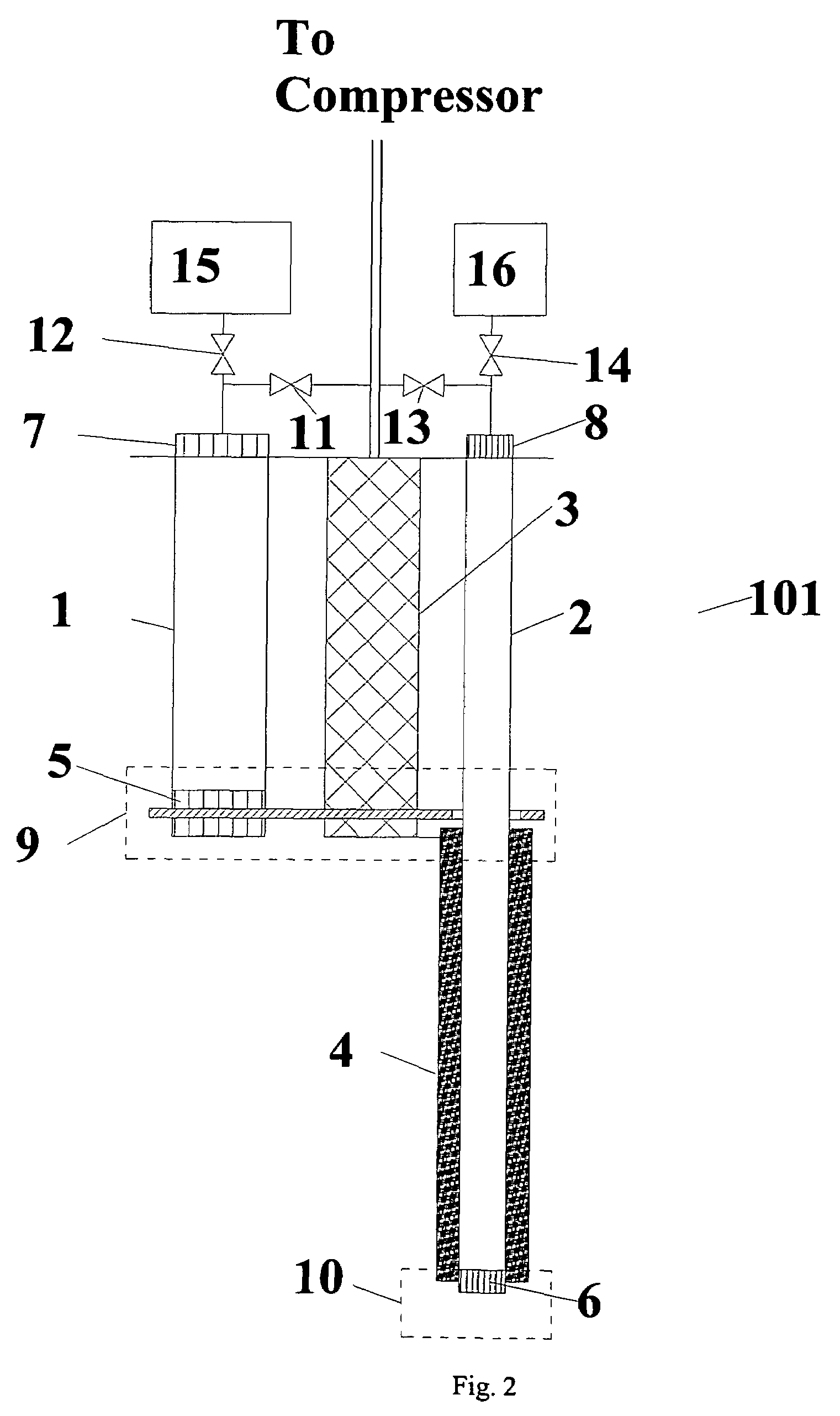Co-axial multi-stage pulse tube for helium recondensation
a multi-stage, pulse tube technology, applied in the direction of container filling under pressure, domestic cooling apparatus, lighting and heating apparatus, etc., can solve problems such as thermal losses, and achieve the effects of eliminating convection losses, minimizing thermal losses, and minimizing convection losses
- Summary
- Abstract
- Description
- Claims
- Application Information
AI Technical Summary
Benefits of technology
Problems solved by technology
Method used
Image
Examples
Embodiment Construction
[0029]This invention provides a means to minimize thermal losses where a two-stage pulse tube is mounted in the neck tube of a liquid helium cooled MRI magnet. As shown in FIG. 1 a co-axial pulse tube is inserted in the neck tube where it is surrounded by gaseous helium that has a temperature gradient from room temperature, about 290 K, at the top to 4 K at the bottom. The pulse tube expander has a first stage heat station at about 40 K that is used to cool a shield in the magnet cryostat and a helium recondenser at the second stage.
[0030]Having the pulse tube expander in the neck tube provides an easy way to remove it for service. The co-axial design is more compact than the conventional parallel tube design thus the neck tube can have a smaller diameter, and convective losses due to heat transfer between the pulse tubes and regenerators are eliminated.
[0031]Referring to FIG. 1, the MRI cryostat consists of an outer housing 60 that is connected to inner vessel 65 by neck tube 61. V...
PUM
 Login to View More
Login to View More Abstract
Description
Claims
Application Information
 Login to View More
Login to View More - R&D
- Intellectual Property
- Life Sciences
- Materials
- Tech Scout
- Unparalleled Data Quality
- Higher Quality Content
- 60% Fewer Hallucinations
Browse by: Latest US Patents, China's latest patents, Technical Efficacy Thesaurus, Application Domain, Technology Topic, Popular Technical Reports.
© 2025 PatSnap. All rights reserved.Legal|Privacy policy|Modern Slavery Act Transparency Statement|Sitemap|About US| Contact US: help@patsnap.com



